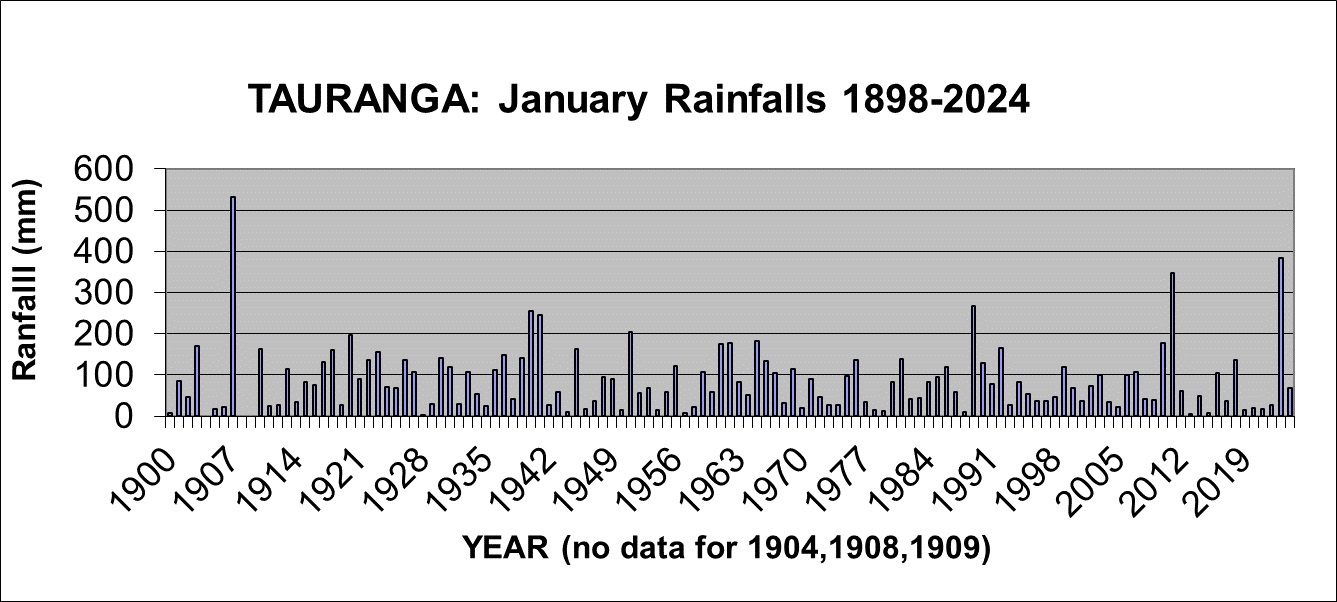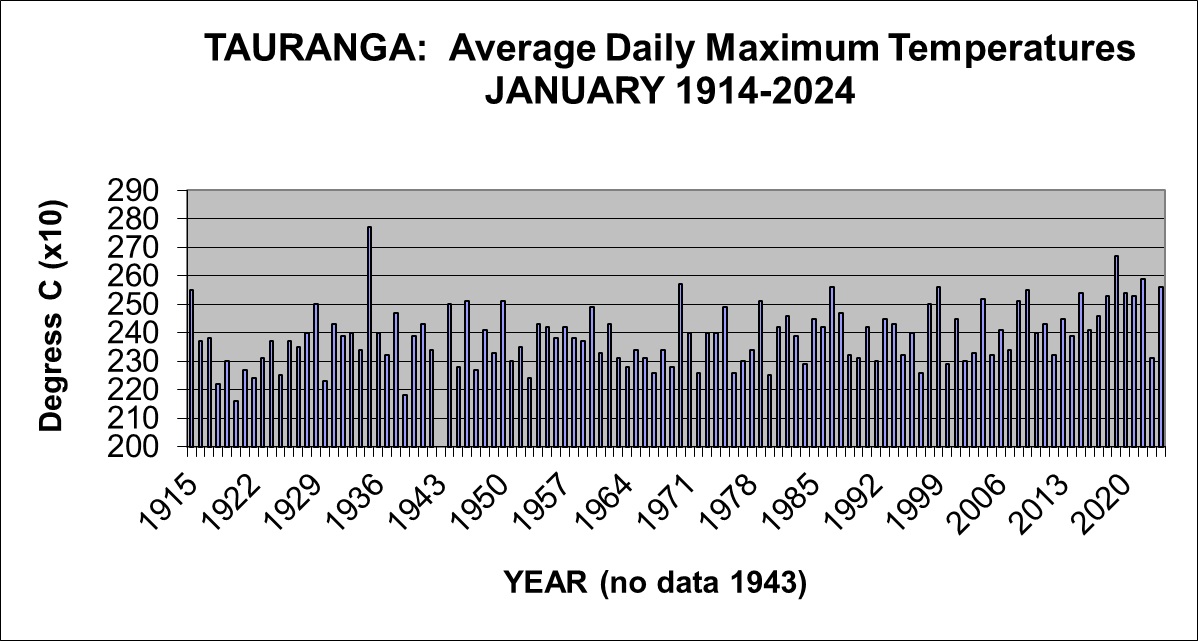 |
Weather Eye with |
Monthly rainfalls for Tauranga have been recorded at several recording sites during the last 126 years.
From January 1898 to December 1904, the observation site was described as the Tauranga Harbour, from November 1904 to April 1907 the site was described as simply ‘Tauranga'.
From January 1910 to December 1923 the site was Waikareao, in Otumoetai; from January 1924 to September 1940 the site was at 148 Waihi Rd, in Judea; from October 1940 to January 1941 the site was at Te Puna; and from February 1941 to now, the site is Tauranga Airport.
The methodology used in adjusting the older sites to the current observing site was published in the ‘NZ Meteorological Service Miscellaneous Publication' No 180 in 1984.
It is considered that the homogeneous rainfall series described here is a fair and true record of what the rainfall would have been if the current observation site (Tauranga Airport) had been used since 1898.
This should be coupled with the understanding that although standard accepted methodologies have been used, any adjustments are only estimates of what would have occurred if the location of the rainfall records had always been in the same place with the same surroundings and the same or similar recording gauge.
In terms of climate change (such as is it getting wetter or drier, or warmer or colder), the methodology used in computing an ‘official' set of climate observations is very important, as otherwise erroneous conclusions may be drawn.

The graph shows the range of Tauranga's January rainfalls from 1898-2024, varied from an extreme high of 532 mm in 1907 to a low of only 1 mm in 1928.
The second wettest January was 2023, when 385 mm was recorded; and the second driest January was in 2013, when only 4 mm fell.
The long-term average rainfall for Tauranga for January is 89 mm.
The rainfall for January 2024 was 68 mm..
The graph of the January rainfall shows generally normal variations from year to year.
Since 1898 there have been nine January months with a rainfall of 180 mm or more, with two such wet January months, 1940 and 1941, being consecutive.
Seventeen January months have experienced rainfalls of less than 20 mm.
In chronological order, the nine wettest January months are 1907 with 532 mm, 1920 with 196 mm, 1940 with 254 mm, 1941 with 245 mm, 1951 with 204 mm, 1965 with 183 mm, 1989 with 268 mm, 2011 with 347 mm, and 2023 with 385 mm.
In contrast, the seventh driest January months in chronological order are 1900 with 8 mm, 1928 with 1 mm, 1944 with 10 mm, 1957 with 8 mm, 1988 with 9 mm, 2013 with 4 mm, and 2015 with 8 mm.
*******
Temperatures have been recorded in the Tauranga area at several sites during the last 111 years, including the current Tauranga Airport site from June 1990.
The graph above shows details of the average daily maximum temperatures (called simply ‘afternoon') for Tauranga for January from 1914-2024.

The long-term average afternoon temperature in January for Tauranga is 23.8 degrees Celsius, ranging from the cool January months of 1920, with 21.6 degrees Celsius, and 1939 with 21.8 degrees Celsius, to the very warm January month of 1935, with 27.7 degrees Celsius, and January 2019 with 26.7 degrees Celsius.
The average afternoon temperature in January 2024 was 25.6 degrees Celsius, the third warmest on record.
The average January afternoon temperature during the 50 years from 1963 to 2011 of 23.8 degrees Celsius, is the same average recorded in the 50 year period from 1914 to 1962.
From 1914 to 2024, there have been fourteen January months with an average afternoon temperature of 25.3 degrees Celsius or higher, and seven January months with an average afternoon temperature of 22.5 degrees Celsius or lower.
The warmest January months (in terms of afternoon temperatures), on record, in chronological order, are 1914, 1915, 1935, 1970, 1957, 1999, 2009, 2015, 2018, 2019, 2020, 2021,,2022 and 2024,. By contrast the seven coolest January months on record, in chronological order, are 1918, 1920, 1922, 1925, 1930, 1939, and 1980.
For further information on a range of weather/climate matters see:
